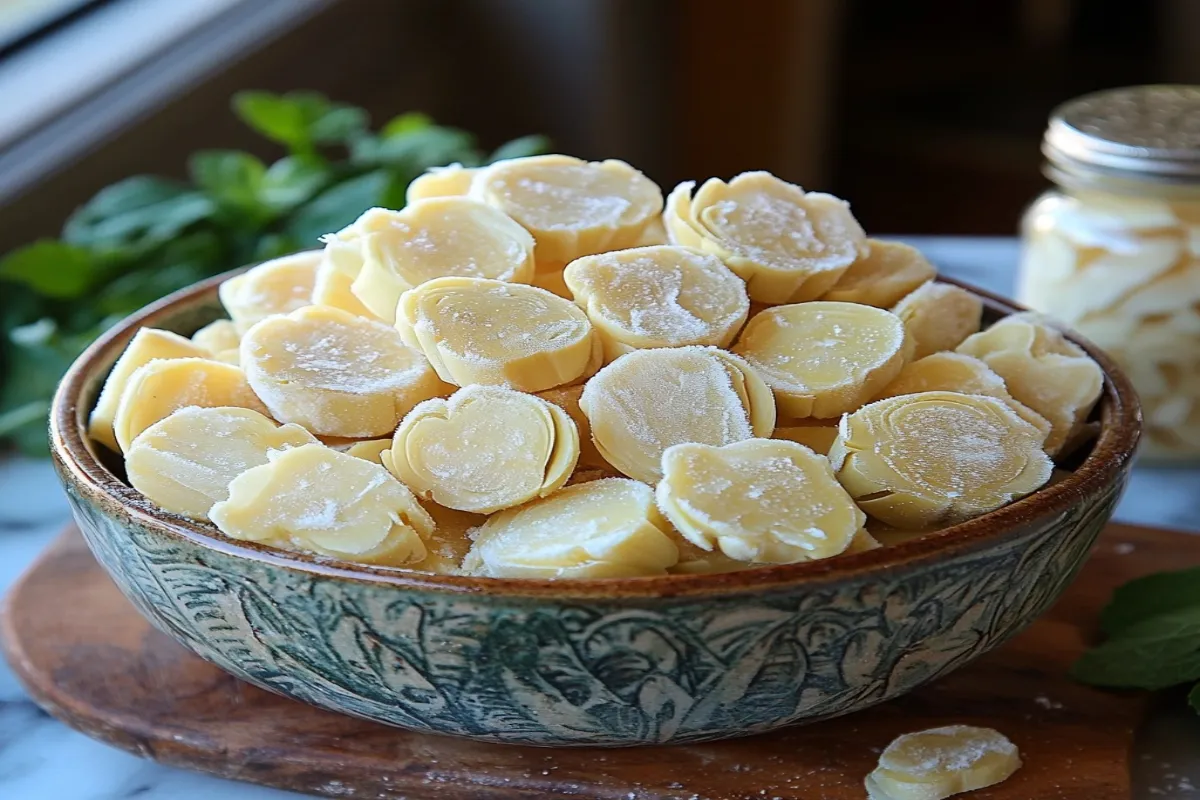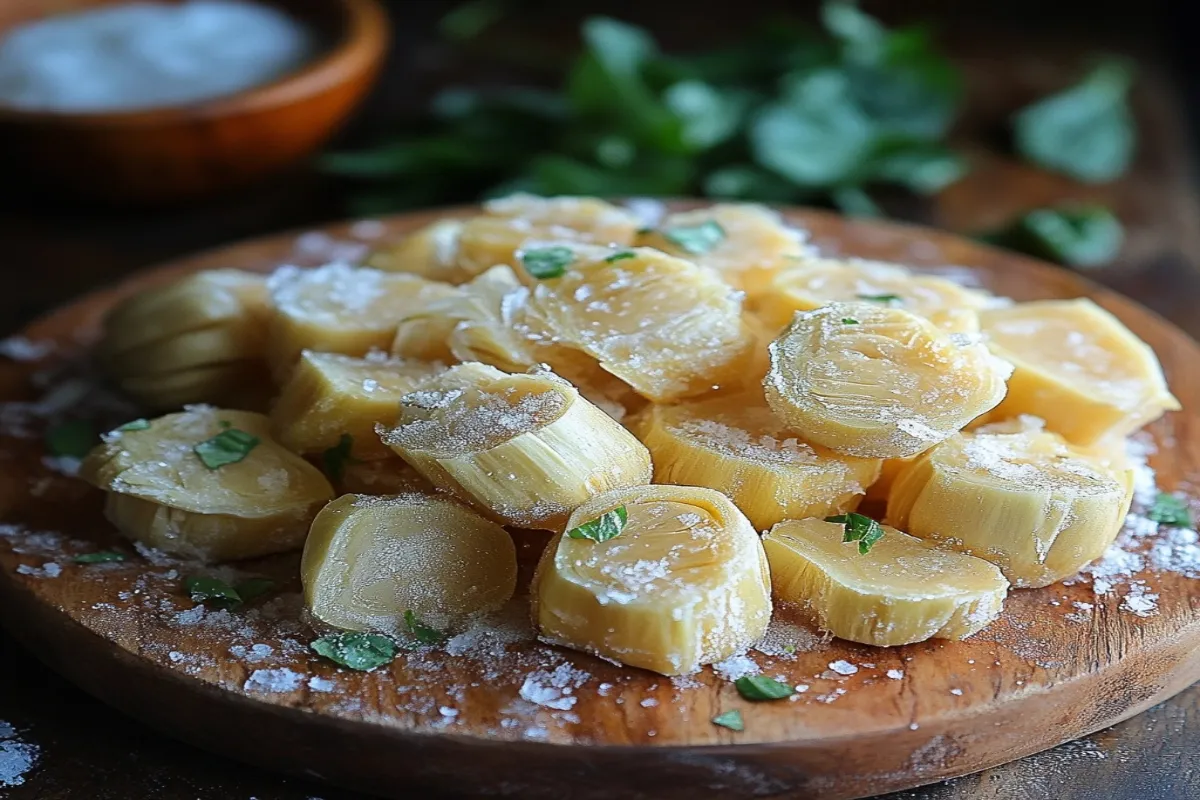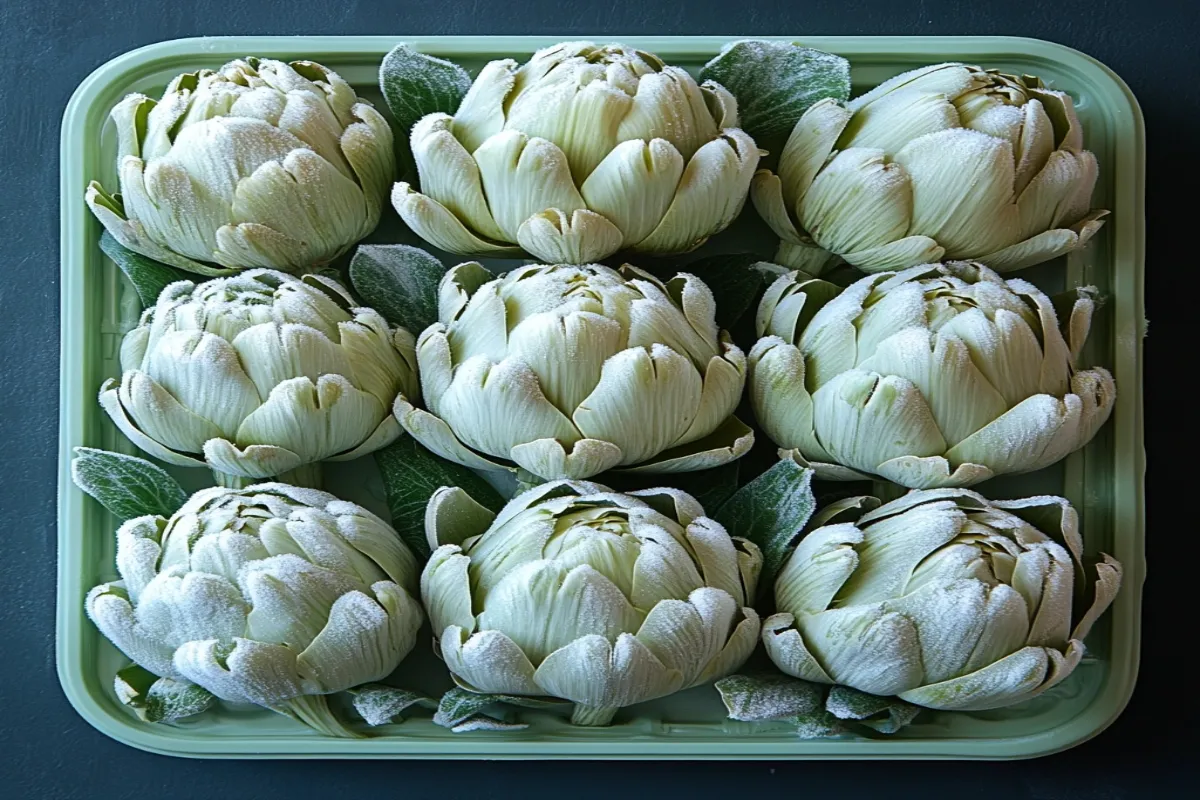Artichokes are often considered a gourmet vegetable, but when you use frozen artichoke hearts, they become an easy and accessible ingredient for everyone. Artichokes are not only delicious but also packed with nutrients like fiber, antioxidants, and vitamins. Frozen artichoke hearts allow you to skip the time-consuming process of prepping fresh artichokes while still enjoying their subtle flavor and versatility.
In this article, you’ll learn how to turn frozen artichoke hearts into a flavorful dish that’s perfect as a side, appetizer, or even the star of your meal. You’ll also discover the best ingredients to pair with artichokes, tips for cooking them, and ways to customize the recipe to suit your dietary needs. By the end, you’ll have a go-to recipe for frozen artichoke hearts that is not only quick and easy but also bursting with flavor. Let’s dive in!
Essential Ingredients for Cooking Frozen Artichoke Hearts Recipe
Cooking frozen artichoke hearts is not only convenient but also requires minimal ingredients. The goal is to enhance the natural flavor of the artichokes while keeping the dish simple. Here are the key ingredients you’ll need to create a tasty dish using frozen artichoke hearts:
1. Frozen Artichoke Hearts
The main ingredient is, of course, frozen artichoke hearts. Frozen artichoke hearts are pre-cleaned and ready to cook, making them a convenient alternative to fresh ones. Look for high-quality frozen artichokes with no added preservatives or flavorings. They usually come in bags, and you can find them in most grocery stores.
- Tip: Thaw the artichoke hearts before cooking to ensure even heat distribution. You can thaw them overnight in the refrigerator or quickly by running them under cold water for a few minutes.
2. Olive Oil
Olive oil is essential for adding richness and helping to crisp the artichokes as they cook. It also helps in carrying the flavor of any seasonings you add to the dish. You only need a few tablespoons, but it makes a huge difference in texture.
- Alternative: You can also use avocado oil for a higher smoke point or coconut oil for a subtle hint of sweetness. Each oil imparts its own flavor, so choose based on your preference.
3. Garlic
Garlic adds a savory, aromatic element that complements the mild flavor of the artichoke hearts. Fresh minced garlic works best, but garlic powder can be used as a quick substitute.
- Tip: Sauté the garlic lightly in olive oil before adding the artichokes to enhance its flavor without burning. Burnt garlic can leave a bitter taste, so keep an eye on the heat.
4. Lemon Juice
A splash of lemon juice adds brightness and acidity to the dish, balancing the richness of the olive oil and garlic. Lemon juice enhances the natural flavor of the artichoke hearts, making them taste fresher and more vibrant.
- Alternative: If you don’t have fresh lemons, bottled lemon juice works in a pinch. For a more complex flavor, try adding a bit of zest along with the juice.
5. Salt and Pepper
Salt and pepper are essential seasonings that help bring out the flavors of the dish. While simple, these basic spices are crucial for seasoning artichokes properly.
- Tip: Use kosher salt or sea salt for a more subtle, natural flavor. You can also experiment with flavored salts, such as garlic or herb-infused varieties, for added complexity.
6. Optional Seasonings and Herbs
While frozen artichoke hearts taste great with just olive oil, garlic, and lemon, adding herbs and spices can elevate the dish. Here are some ideas:
- Red Pepper Flakes: For a bit of heat.
- Fresh Parsley: Adds freshness and color.
- Thyme or Rosemary: These herbs add an earthy, aromatic flavor.
- Grated Parmesan Cheese: Adds a savory, umami-rich note if you’re not keeping the dish vegan.
These ingredients are easy to find and work harmoniously together to make the artichoke hearts shine.
How to Cook Frozen Artichoke Hearts: Step-by-Step Instructions

Cooking frozen artichoke hearts is incredibly simple and quick. Follow these easy steps to prepare a delicious dish in no time.
Step 1: Thaw the Frozen Artichoke Hearts
The first step is to thaw the artichoke hearts. You can do this by leaving them in the refrigerator overnight or placing the sealed bag under cold running water for a few minutes. Thawing them ensures even cooking and prevents excess water from diluting the flavors.
- Tip: Pat the artichoke hearts dry with paper towels to remove excess moisture. This step is crucial if you want a crispy, golden exterior when pan-frying or roasting.
Step 2: Heat the Olive Oil
In a large skillet, heat a few tablespoons of olive oil over medium heat. Olive oil is the foundation of this dish, so make sure the oil is hot before adding the artichoke hearts to achieve a crispy exterior.
- Tip: Use a non-stick or cast-iron skillet for the best results. Both retain heat well and ensure even cooking.
Step 3: Sauté the Garlic
Once the oil is heated, add the minced garlic. Sauté the garlic for 1-2 minutes until it becomes fragrant and lightly golden. Be careful not to let the garlic burn, as it can become bitter.
- Tip: If you’re adding red pepper flakes for a bit of spice, toss them into the oil with the garlic to infuse their flavor.
Step 4: Cook the Artichoke Hearts
Next, add the thawed artichoke hearts to the skillet. Cook them for about 5-7 minutes, stirring occasionally, until they are golden brown and slightly crispy around the edges.
- Tip: Don’t overcrowd the skillet. If you’re cooking a large batch, it’s better to work in two or more smaller batches to ensure each piece gets evenly browned.
Step 5: Add Lemon Juice and Seasonings
Once the artichoke hearts are golden and crispy, squeeze fresh lemon juice over them. Then season with salt and pepper to taste. You can also add any other herbs or spices at this point, like parsley or thyme, to enhance the flavor.
- Tip: For a cheesy twist, sprinkle grated Parmesan cheese over the artichokes while they’re still hot, so it melts slightly.
Step 6: Serve Immediately
Your frozen artichoke hearts are now ready to serve! They are best enjoyed immediately while they’re still warm and crispy.
- Tip: Serve them as a side dish, on top of pasta, or with a dipping sauce like aioli or yogurt-based dips for a more substantial appetizer.
Top Tips for Cooking Frozen Artichoke Hearts
Making frozen artichoke hearts delicious and crispy can be easy if you follow these expert tips.
1. Thaw Before Cooking
Thawing frozen artichoke hearts before cooking is key to achieving an even texture. Cooking them straight from frozen can result in soggy, unevenly cooked artichokes.
2. Pat Them Dry
After thawing, always pat the artichoke hearts dry. Excess moisture can prevent them from crisping up properly, especially if you’re pan-frying or roasting them.
3. Don’t Overcrowd the Pan
Whether sautéing or roasting, make sure not to overcrowd the pan or baking sheet. This ensures that the artichoke hearts cook evenly and develop a nice golden crust.
4. Add Fresh Herbs at the End
If you’re using fresh herbs like parsley or basil, add them at the very end of the cooking process. Adding them too early can cause them to wilt and lose their bright flavor.
5. Experiment with Flavors
Artichoke hearts are mild in flavor, making them perfect for experimenting with different seasonings. Don’t be afraid to try new herbs, spices, or even a splash of balsamic vinegar for a unique twist.
Best Serving Ideas for Frozen Artichoke Hearts

How you present and serve your artichoke hearts can make a big difference in elevating the dish. Here are some creative ways to serve this versatile ingredient.
1. As a Side Dish
Frozen artichoke hearts make an excellent side dish for a wide variety of meals. Serve them alongside roasted chicken, grilled fish, or pasta for a healthy, flavorful complement.
- Tip: Drizzle them with additional lemon juice or a balsamic glaze for extra flavor just before serving.
2. Tossed with Pasta
For a simple yet delicious pasta dish, toss the cooked artichoke hearts with your favorite pasta, olive oil, and Parmesan cheese. Add some spinach or sun-dried tomatoes for extra texture and flavor.
- Tip: Add a splash of the pasta cooking water to create a light sauce that coats the noodles and artichokes.
3. As an Appetizer
Serve the crispy artichoke hearts as an appetizer at your next gathering. You can pair them with a variety of dipping sauces like aioli, hummus, or a tangy yogurt dip.
- Tip: Sprinkle with sea salt and fresh herbs right before serving to enhance the flavor.
4. In Salads
Artichoke hearts add a unique texture and flavor to salads. Toss them into a mixed green salad with ingredients like olives, feta cheese, and cherry tomatoes.
- Tip: Serve with a lemon vinaigrette or a balsamic reduction to bring out the flavors of the artichokes and other salad components.
5. As a Pizza Topping
For a Mediterranean-inspired pizza, add frozen artichoke hearts to your pizza along with ingredients like olives, roasted red peppers, and feta cheese.
- Tip: Be sure to roast the artichokes beforehand to prevent them from releasing moisture and making the pizza soggy.
Recipe Variations and Dietary Alternatives for Frozen Artichoke Hearts
One of the best things about cooking frozen artichoke hearts is that they are incredibly versatile and can be adapted to different flavor profiles and dietary needs. Here are some popular variations to try.
1. Garlic and Herb Roasted Artichoke Hearts
Toss the thawed artichoke hearts with olive oil, garlic, rosemary, and thyme before roasting them in the oven. This method gives the artichokes a rich, aromatic flavor and a crispy texture.
2. Spicy Artichoke Hearts
If you enjoy a bit of heat, add red pepper flakes or cayenne pepper to the olive oil and garlic when sautéing the artichoke hearts. The spice pairs wonderfully with the earthy flavor of the artichokes.
3. Vegan and Gluten-Free Adaptations
This recipe is naturally gluten-free and can easily be made vegan by omitting the Parmesan cheese or using a vegan alternative. You can also substitute any butter in the recipe with plant-based margarine or oils like olive oil.
4. Artichoke Heart Dip
For a creamy, indulgent dish, use frozen artichoke hearts to make a rich artichoke dip. Blend the cooked artichokes with cream cheese, garlic, and spinach, then bake until bubbly and golden. This dip is perfect for parties or as a spread on toast.
5. Lemon Butter Artichokes
For a rich and tangy flavor, toss the artichoke hearts with melted butter and fresh lemon juice. This simple preparation works well as a side dish for grilled fish or chicken.
Frequently Asked Questions About Frozen Artichoke Hearts
1. Do I need to thaw frozen artichoke hearts before cooking?
Yes, it’s best to thaw them first to ensure even cooking and to prevent excess moisture.
2. Can I roast frozen artichoke hearts?
Absolutely! Roasting frozen artichoke hearts gives them a delicious crispy texture. Just make sure to thaw them first.
3. How long do frozen artichoke hearts last in the freezer?
Frozen artichoke hearts can last up to 8-10 months in the freezer if stored properly.
4. What can I serve with artichoke hearts?
They pair well with grilled meats, pasta, salads, and as an appetizer with dipping sauces.
5. Can I use frozen artichoke hearts in dips?
Yes! Frozen artichoke hearts are perfect for making creamy dips, like spinach-artichoke dip.
Conclusion
Frozen artichoke hearts offer a simple, flavorful, and nutritious way to enjoy this gourmet vegetable without the hassle of prepping fresh artichokes. Whether you roast, sauté, or incorporate them into a larger dish, they provide endless versatility and delicious results. Now that you know how to cook frozen artichoke hearts and have plenty of ideas for serving and variations, it’s time to try it out in your kitchen. Give this recipe a go and share your favorite combinations or adaptations!

